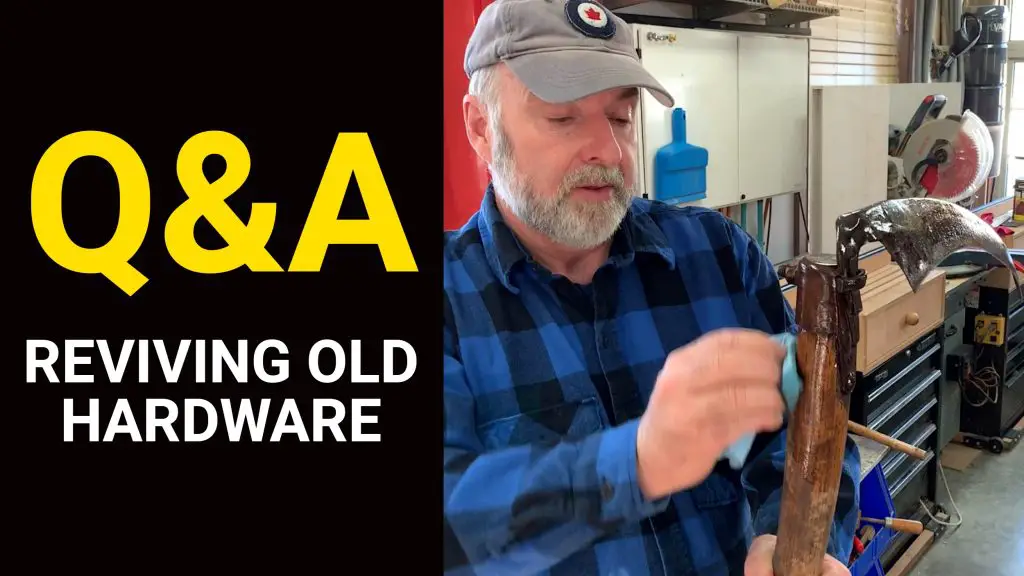PUBLISHED 3Jul2020 + video below
Q: What’s the best way to clean rust and dirt off of an old door lock? It’s seized and rusty right now, but it looks like a nice old lock with potential.
A: Good for you for wanting to salvage old hardware. There was some exceptionally beautiful hardware made in yesteryear, before the time when so many manufacturers began rushing to produce the cheapest possible products. I guarantee you that you’ll love that door lock all the more because of the work you put into it.
Step#1: Start by brushing off any loose surface rust, then lubricate the latch with a thin oil of some kind.
WD-40 from a spray can works fine, but so will any other light, thin lubricating oil. I have a big jug of sewing machine oil that I use for jobs like this. Given enough time you should be able to get the latch operational again, and nice and clean. Wet/dry sand paper and synthetic rubbing pads are also a great thing to use to remove rust from oily metal. Just rub different parts of the lock, dry off the oil to see how the metal looks, apply more oil, then sand more.
Step#2: Prevent rust from reforming.
When you’ve got the lock looking good, give it a very light coat of boiled linseed oil, then let it sit for two days. Linseed oil is normally used as a wood finish, but it’s also superb at protecting metal. This little-known fact is valuable. The reason this works so well is because linseed oil hardens and forms a clear, durable skin. You get all the protection of oil, with none of the greasiness. Boiled linseed oil is also great for protecting steel shovels, rakes, axes and any other outdoor tool that could easily rust without protection.
TIP: If the hardware you’re working on happens to be brass (as opposed to steel), go gently. Brass is soft, and part of the attraction is developing a great surface shine by polishing. Don’t use a wire brush on brass, but rather an old tool brush and some paint remover to get rid of any paint residue. Brasso polish works great in my experience, once you get the initial layer of filth and corruption removed.
The video below shows how I sharpen an old-time hand tool called a scythe, but the video also covers the use of boiled linseed oil as a protection for metal and wood. Linseed oil is great stuff, as you’ll see.
